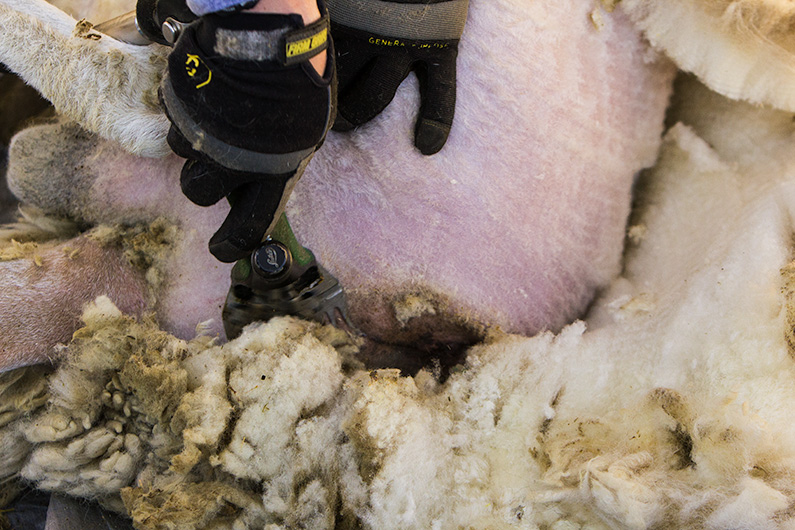Caroline and I went out to Tonopah, Arizona today, it’s shearing time for the sheep at Chile Acres. Following Caroline sharing the joys of working with wool with Celia (co-owner of Chile Acres with Jimmy Peterson – her husband) a new animal found its way on the farm – sheep. Much of the wool is sold within minutes of it coming off the sheep to the dozen or so fellow fiber freaks who’ve driven out here just for this special event. What’s left will find its way into being made into felted objects, some will be spun into yarn and sold at the Downtown Phoenix Public Market where Jimmy and Celia sell their various farm products. Caroline and I simply leave with smiles.
Food For Thought
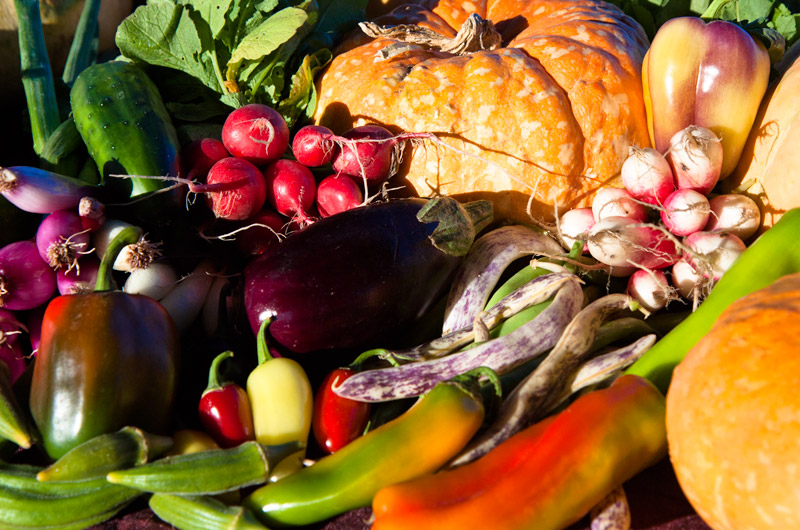
Take a good look at these locally grown fruits and veggies, they may soon be one of the last looks you’ll be able to take – outside of marketing materials that will recall a different age. Unless you are into that old-fashioned stuff.
Don’t believe me? Consider this: as recently as 1955 a majority of households had a woman or girl who could sew. Back then, 63% of women and girls knew how to sew, many still knew how to darn socks, spin fiber into yarn, quilt, and weave. By 2006, only 22% of American women and girls knew how to sew. Now I don’t mean to imply this is necessarily a negative, but the fact is, a family is less independent when they are dependent upon larger systems where the local skills for taking care of one’s self are long gone. We humans have a very long history of making textiles, around 20,000 years worth according to some evidence.
Farming is in a similar situation, 140 years ago between 70 and 80 percent of our population was employed in agriculture. Today only 2 to 3 percent of the population is employed in agriculture and less than 1 percent of the population claim farming as an occupation. The point being, individuals are now far removed from growing their own food. True, they have greater access to a wider variety of foods, but they are dependent upon the viability of industrial farms, the price of fuel to distribute food across great distances, and if the corporate model decides that a type of produce is no longer a worthy seller, it can simply disappear those items. The good thing is that we no longer have to toil in the back-breaking labor of working the earth. Then again, we don’t know how anymore either.
This brings me to today’s thought. A couple of hundred years ago, people would not have believed that within a relatively short number of generations, humans in Kansas would be buying fresh kiwis that were flown in from New Zealand. A hundred years ago, I doubt many people would have accepted that the majority of their clothes should be disposable, made in India or China, and would wear out in a year with nobody complaining. Modernization has taken much of the drudgery and responsibility for the mundane out of our lives.
The next step is to remove cooking from our lives. Why do we need to cook our own meals? Wouldn’t life be yet another degree better if we could get rid of food that might spoil, be contaminated with e. coli or salmonella, or require all the time of buying cookbooks, finding ingredients, preparing lengthy recipes, with all of the uncertainty of not knowing if our preparation is as good as the chow mein we had in New York City?
So here’s the next big internet idea, the next Amazon, or NetFlix. We’ll call our company, International Frozen Food Incorporated – IFFI for short. Our line of frozen meals will feature recipes from around the globe, made in kitchens from Mumbai to Hong Kong, from Senegal to the Philippines. The customers set their likes and dislikes in a preference file, choose if they are vegetarian, vegan, lactose intolerant, non-pork eater, groundnut allergic, reduced-calorie, diabetic, etc. Then they choose what country’s meals they want to try and as with Netflix, they build a queue of ethnic delights they want to sample and in what order. As with Amazon, meals will feature reviews and ratings. Every week, a new box arrives with the post containing your frozen meals for the week.
Just imagine, IFFI Dim Sum or maybe you’d prefer our IFFI Fish from Malaysia, and what could be better than IFFI Jambalaya direct from New Orleans? Every meal is standardized with a caloric count related to your weight, height, and age. Prices are $3.99 per meal – across the globe!
Some people reading this might think, Wow, sounds great. Personally, I don’t think this sounds like a great idea. We humans are more and more dependent upon monolithic corporate structures that take care of most of our needs in exchange for our brand loyalty. We in turn give up our independence. We have become helpless and would prove useless to ourselves if we needed to grow our own food, make our own clothes, or find clean water. Soon, we will no longer know how to cook for ourselves as we won’t need to.
And what do we get for our reliance on forces and services outside of ourselves? More time to toil at work, play video games, watch TV, and shop as we entertain ourselves to death within the climate-controlled walls of a safe place. Do we really no longer need reality?
Roasted
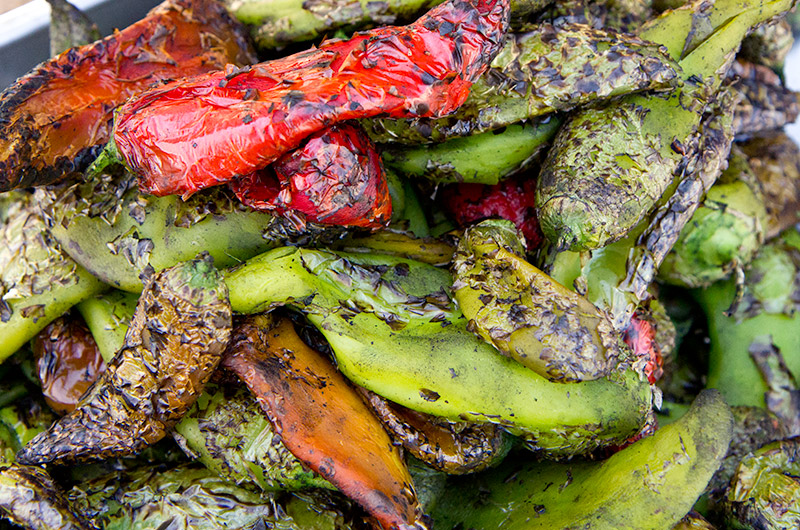
Round and round they go, where they stop nobody knows. The fire was blazing and the cage filled with fresh chili peppers was smoking. I turned that caged barrel of scorching heat until skins were blackened and seeds were popping out. For hours I filled, fired, and emptied load after load until I must have roasted twenty-five pounds of peppers. Lucky for me Tonopah Rob has just the device to make roasting chilis a piece of cake because this would have been impossible in my oven. Back home the now cooled chilis have had the rest of their peels removed, they are destemmed and deseeded and then put into pint-size freezer bags for use over the coming year.
Purple and Green Beans
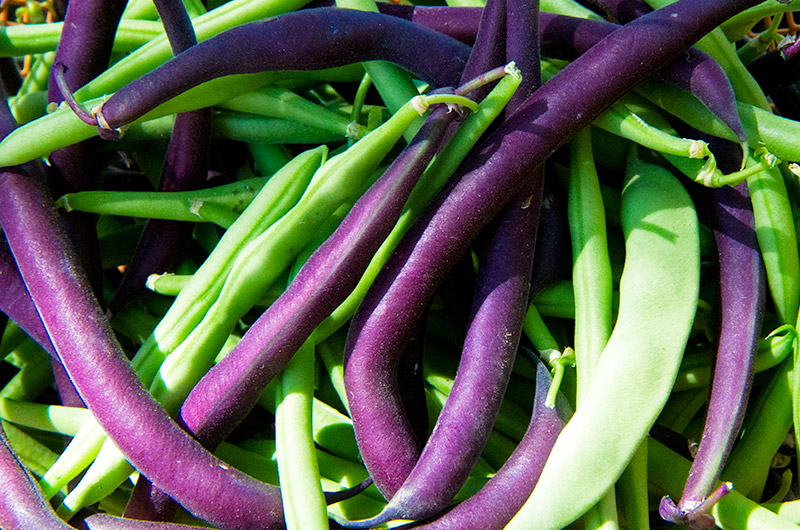
I’ve been busy out at Tonopah Rob’s farm lately, first with my garlic coming in two weeks ago and now the first harvest of beans which I picked just today. It was only 1.3 pounds but there are a ton of tiny beans just waiting to grow up. It struck me today that I don’t often write about my time volunteering on the farm, well a lot of that has to do with the fact that I find myself blogging about it on Rob’s website. If you are interested in my ghostwriting techniques and would like to see some of my other vegetable photography, head on over to Tonopahrob.com – you might even get a laugh from time to time.
My Garlic
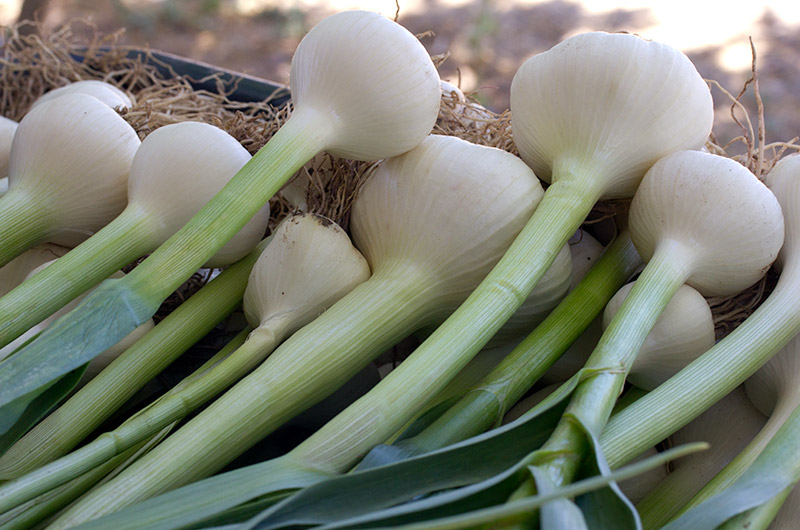
After nearly nine and a half months or the equivalent of the human gestation period the garlic I planted on Tonopah Rob’s farm back on September 21st was finally ready for picking. Seven and a half pounds of the Italian rose is coming home with me to dry outside for about a week before I bag it up and hang it on the back of our closet door so it can stay in a cool dark place. The trick will be to eat 54 heads of garlic before even one spoils, good thing we love garlic.
A Visit To The Farm Stand
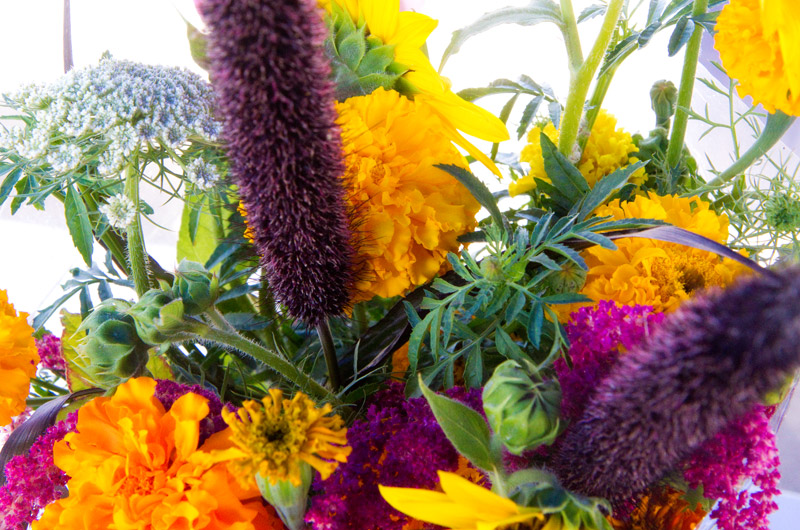
Sure the peppers, potatoes, onions, and garlic all look great. And yes, they are reminders that for local Arizona desert farms, summer is here. But it was the flowers on display that demanded my attention. After July 1st the flowers will be few and far between out at Tonopah Rob’s Vegetable Farm, a matter of fact, the farm will fall into a dormant state of brown until those first green shoots reappear come late September. During the winter months, while lettuce, spinach, beets, and carrots riddle the plots with salady wonderfulness, there is nary a flower to be found. Come around May and the explosion of color is hard to miss. With love-lies-bleeding, amaranth, carrot flower, sunflower, millet, cockscomb, freesia, and a host of vegetables that have bolted to seed, the local bee population is abuzz in delight as were my eyes this Sunday at Tonopah Rob’s Farm Stand.
Blackberries and a Ghost Town

Early O’thirty was about when we were off and driving southwest towards Yuma, Arizona, for a morning of blackberry picking at Silva’s Farms. Two years ago, we picked buckets full to bring back home and freeze. Now, out of fresh, sweet blackberries, it was time to make the trip once more. The season lasts about a month, and the 235-mile drive each way may not seem worth it to some, but then they probably haven’t spent a few hours in an orchard picking blackberries that fall off at a touch, staining fingers purple before being gobbled up. And gobbled up. A few for the bucket, five for me, two for the bucket, and six for me. Two thoughts come to mind: I hope I don’t get a stomach ache and do too many sun-warmed sweet blackberries give you the runs? I can attest that after eating more than a pound – for free – I felt great and was able to maintain my dignity without a mad dash to the outhouse.

Twenty pounds worth, that’s how many blackberries we ended up packing into the ice chest. For everyone who thought we were crazy for driving so far just for berries, they sure didn’t mind taking a couple of pounds off our hands once they tasted them. From the farm, we drove further south to San Luis on the Mexican border, looking for a roadside taco shack. We found Tacos Sahuaro with the cook armed with a cleaver chopping up the lengua (tongue), which I tried and enjoyed. With my stomach full of tongue, it was time to drive north.

Our first detour was a visit to Imperial Dam, and along the road, we were surprised by an oasis of shallow wetlands. A checkmark is placed next to this location for a winter return when we assume this area must play host to migratory birds. This dam on the Colorado River is the collection point for the water that will be pumped northwest into California and down to the Yuma area to irrigate the desert lands that feed so much of America’s desire for lettuce and other produce. North of the dam, we visited the Senator Wash Reservoir and surrounding lakes to see what was what on the California side of the Colorado River.

Highway 95 north passes the Kofa National Wildlife Refuge – we failed to see wildlife, but our turnoff from the main highway onto Castle Dome Mine Road was not with the intent of going bird watching; we were driving up this bumpy dirt road to visit the Castle Dome Ghost Town. In our little red Kia Spectra, we bounced along over the washboard road for about 10 miles before approaching the sign directing us to a small car corral.

Proprietor Allen Armstrong welcomed us and collected our small $6 entry fee – that was worth every penny, although we didn’t know it at that moment. Castle Dome Ghost Town is one of the most amazing ghost towns we have visited – although we haven’t seen Bodie in California yet. After walking through the gift shop, you enter the town and take two steps back into history. Allen and his wife Stephanie purchased the property, saving it from the wrecking ball, and began restoring the 37 buildings that make up this great attraction. The photo above features some of the belongings of the Stone Cabin Ladies – Stephanie is currently writing a book about the sisters who lived in the area. One of them survived into her 90s and welcomed visitors to their diner until 1988.

Interior of the hotel with artifacts galore on display. The openness of the displays and the opportunity to walk through this historic site are simply wonderful. Allen explained how many of the treasures were recovered from the mines where “old junk” was discarded. If you plan a visit, don’t do like us, and arrive at 2:30, you’ll be disappointed that you have so little time before they close up and kick out the ghosts at 5:00 pm.

We ran out of time to visit the other side of the road, where an old bunkhouse and some abandoned mines are located. The mines are closed up so no one goes hurting themselves, tumbling down a shaft, or getting lost in some maze with the rattlesnakes. During the summer, the old ghost town sees few visitors – it’s hot, really hot out here, and there ain’t no air conditioning. If you should find yourself wanting to visit and aren’t sure about the hours or directions you can call the ghost town at 928-920-3062. Their map coordinates are: N 33° 02.766 W 114° 10.668

Before leaving, we offered Allen some of our stash of chilled blackberries. He told us of how he and his wife would pick berries when they used to live in Washington, canning them for later use on pancakes. Tomorrow morning, he and his wife would make pancakes to enjoy the blackberries with – kind of a re-acquaintance with a moment from their own history. Take a minute yourself someday and visit Castle Dome Ghost Town and acquaint yourself with a moment from our country’s history – you’ll have a great time out here in the middle of nowhere.
